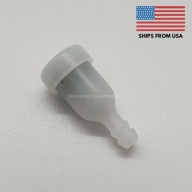- Messages
- 5,830
- Location
- Maryland, USA ??
There seems to be a discrepancy on this answer, but should the gas tank vent out only, allow air in only, or work both ways with a check valve to stop fuel from escaping? Tell me what you guys think and cast a vote!!
Last edited:


